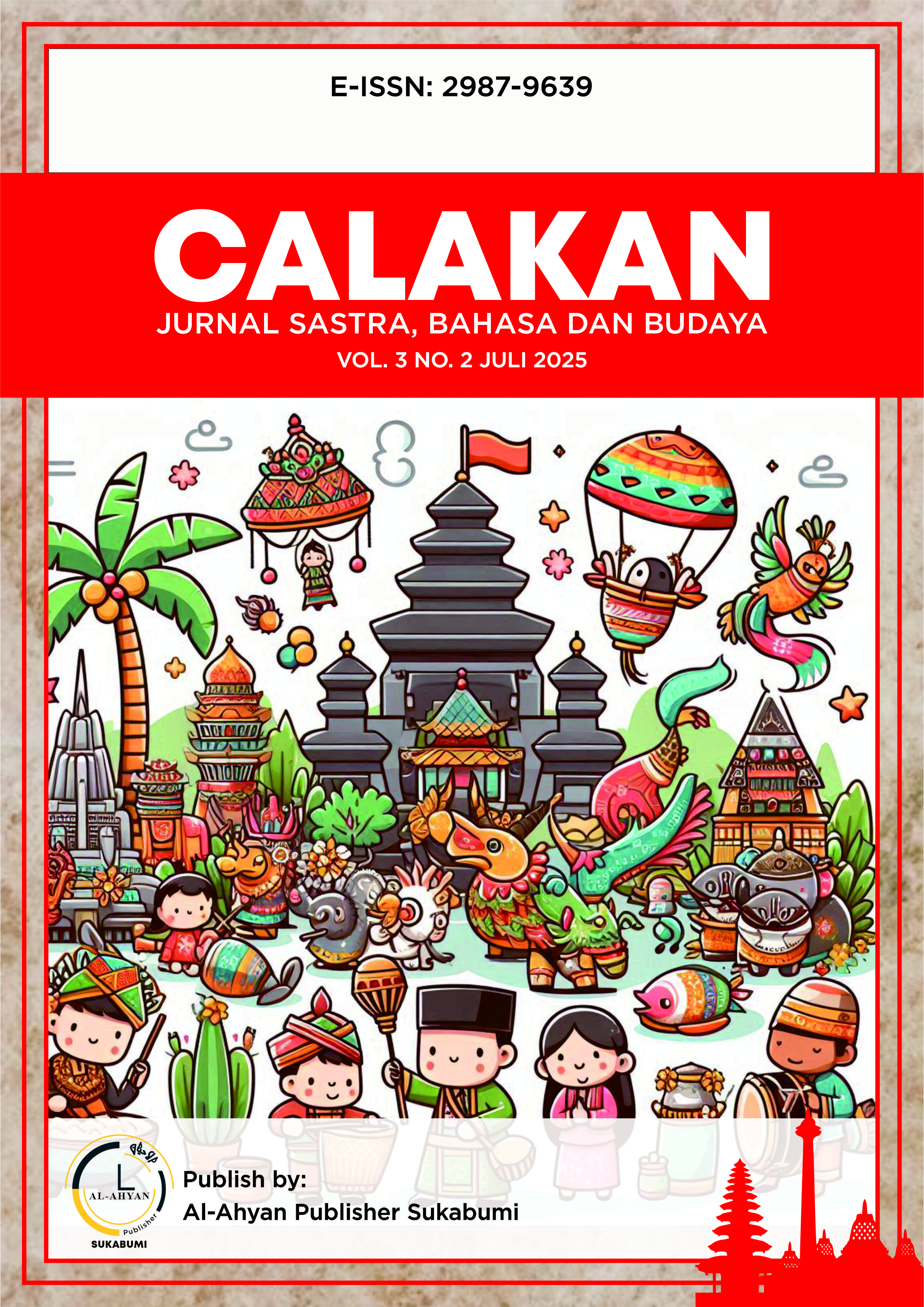The Dark Side of Desire: A Psychoanalytic Analysis of Trauma in Talk to Me (2022)
DOI:
https://doi.org/10.61492/calakan.v3i2.390Keywords:
Psychoanalysis, Jacques Lacan, Trauma, Desire, Talk to Me (2022)Abstract
Trauma is a psychological response rooted in the subconscious and shaped by past experiences, often intensified by social influences. This study explores how Talk to Me (2022) portrays trauma through the lens of Jacques Lacan’s psychoanalytic theory, focusing on the concepts of the Real, desire, and object a. The film presents possession as a metaphor for psychological fragmentation, with the protagonist Mia’s unresolved grief leading to obsession, identity collapse, and emotional deterioration. The embalmed hand symbolizes object a, an unattainable object of desire, while Mia’s pursuit of connection with her deceased mother triggers a confrontation with the Real, exposing the raw terror of psychic disintegration. Using qualitative methods, this study analyzes the film’s narrative and symbolism through observation, film analysis, and supporting academic sources. Findings reveal that Talk to Me reimagines possession as a reenactment of trauma, where each encounter intensifies inner voids. Ultimately, the film suggests that closure from trauma may not emerge through reunion, but through self-sacrifice and painful acceptance.
References
Alikiotis, A. (2024). The Effects of Watching Gore: Can It Cause Trauma? Medshun.com. https://medshun.com/article/can-watching-gore-cause-trauma
Aspers, P., & Corte, U. (2019). What is qualitative in qualitative research. Qualitative sociology, 42, 139-160.
Bilik, M. Z., Hekimoğlu, E. C., & Gençöz, F. (2021). Traces of Unconscious in Language. Language and Psychoanalysis, 10(1), 27–35. https://doi.org/10.7565/landp.v10i1.4390
Dananjaya, W. M. S., & Veerasingam, E. B. (2018). The Projection of Subconscious through Symbolism: An Analysis of Mansfield’s ‘The Voyage.’. International Journal of Scientific and Research Publications (IJSRP), 8(11).
Dumas, C. (2014). Horror and psychoanalysis: An introductory primer. A companion to the horror film, 21-37.
Fink, B. (2025). Lacan on desire: Reading Seminar VI. Palgrave Macmillan. https://doi.org/10.1007/978-3-031-76386-1
Hizkia, H. P., & Rahmawati, I. (2025). Toxic masculinity through ideological violence in Antonio Campos’s The Devil All the Time movie. Mahadaya: Jurnal Bahasa, Sastra, dan Budaya, 5(1), 149–158. https://doi.org/10.34010/fcmzg993
Hunter-Stangler, C. (2025). A Quarter Century of Horror: Societal Fears Captured by Horror Movies of the Last 25 Years. The Lineup. https://the-line-up.com/a-quarter-century-of-horror-themes
Johnston, Adrian, "Jacques Lacan". (2024). The Stanford Encyclopedia of Philosophy (Summer 2024 Edition), Edward N. Zalta & Uri Nodelman (eds.),
Mikles, N. L. (2024). Trauma. In Shattered Grief: How the Pandemic Transformed the Spirituality of Death in America (pp. 151–194). Columbia University Press.
Muyassaroh, & Rahmawati, I. (2025). M’s id, ego, and superego in film How to Make Millions Before Grandma Dies. Calakan: Jurnal Sastra, Bahasa, dan Budaya, 3(2), 399–413. https://doi.org/10.61492/calakan.v3i2.383
Parker, I. (2001). Lacan, psychology and the discourse of the university. Psychoanalytic Studies, 3(1), 67-77.
Wright, C. (2020). Lacan on trauma and causality: A psychoanalytic critique of post-traumatic stress/growth. Journal of Medical Humanities, 42(1), 235–244. https://doi.org/10.1007/s10912-020-09622-w
Downloads
Published
How to Cite
Issue
Section
License
Copyright (c) 2025 Melly Melly, Irma Rahmawati

This work is licensed under a Creative Commons Attribution-ShareAlike 4.0 International License.










